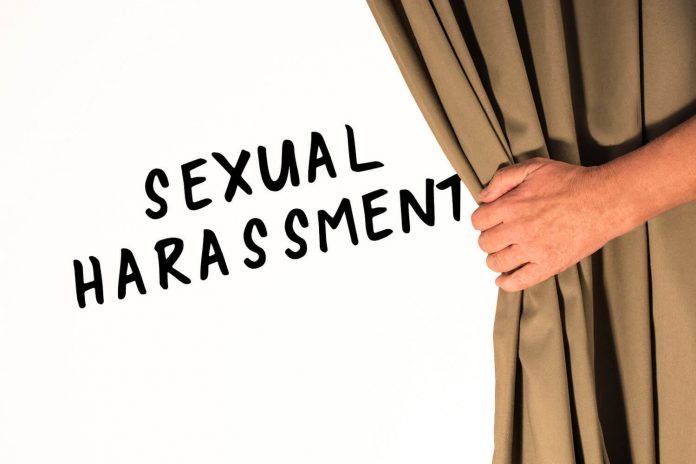This article is written by Geeta Sajjanshetty, Advocate, Karnataka High Court (Kalaburagi bench) who is pursuing a Diploma in Cyber Law, Fintech Regulations & Technology Contracts from LawSikho.
Table of Contents
Introduction
The Internet has penetrated personal lives. With the onset of the COVID-19 pandemic, the internet has become an essential part of life. The pandemic has fostered the concept of work from home for adults, and for children it has been learned from home. Working from home and learning online, both are considered safe options. Working from our comfort zone without having to step outside is considered as a protected, harmless, safe and secure way of working; however, the question is are we protected and secure online?
Are children truly safe learning online and are adults in general and women in particular genuinely safe working online? Is there a possibility of any kind of online sexual abuse or harassment? Many consider that the concept of sexual abuse, harassment occurs physically, in person, however, possibilities of online sexual abuse has increased with vast expanse of technology and reach. Therefore, it is pertinent to know what are the laws that deals with online sexual abuse in India? This write-up tries to provide a bird’s eye view about online sexual abuse.
Types of sexual abuse online
Online grooming
Children are vulnerable in the physical world as well as the virtual world. As pandemic pushed the school learning to online learning, the time spent on digital platforms has exponentially increased and most of the time kids are unmonitored. Online sexual abuse amplifies the existing vulnerabilities of children. Though the digital world provides immense opportunities for learning it also poses risks and dangers for children.
“Grooming” is a method adopted by the perpetrator to become more friendly with the child, to gain the child’s confidence and to get access to the child. As kids venture into social media apps, enter the virtual chat rooms; in order to gain their friendship and trust the perpetrators could pretend like children and win their confidence. The child could be asked to share their details like address, contact numbers etc. However, this is not done in one go, the perpetrators over a period of time will try to get these details. The child could be asked to share a few pictures of themselves and their families, ask for their hobbies, the objective of grooming is to satisfy the sexual urges of the offender.
The solicitation of the child is to exploit the child. Once the child is comfortable sharing more details they could be asked to undress or share nude photos. It is therefore essential that the child is made aware of the fact that s/he could be abused online and explain how to be cautious and careful online. Kids have to be trained the importance of not to share personal details online, not to have video conversations with unknown persons, how to safeguard themselves from abuse and harassment, to recognise and respond appropriately to online dangers.
Child pornography
There is vast child sexual abuse material available online, it is a crime to post child sexual abuse material online in many countries, including India. In the dreamboard case, an online international community formed to share child sexual abuse material, the members in order to gain entry into the limited group had to share material of sexual abuse of child and would then get to access material of child sexual abuse, one of the member of this group, a Massachusetts man was sentenced to 45 years imprisonment. Dreamboard was a member only group which was created to promote paedophilia and encourage sexual abuse of young children, it was operated in a way to be undetected from the law enforcement agencies.
In India, during the lockdown, many WhatsApp and Telegram groups were formed for sharing material of sexual abuse of children. One such group was formed in Kerala, there was increase in demand seeking sexual abuse material on darknet, many were arrested and laptops, computers, mobile phones, modems, memory cards etc were seized for sharing graphics and illegal videos of children.
In the case of Sazzadur Rahman v. The State of Assam and Ors, a fake Facebook account of the victim of 15 years of age was started by the offender and posted some obscene photos by the accused which caused mental trauma and anguish to the victim and she had to lose her academic year because of such a post. Through the IP address, the police were able to track the mobile phone from where the Facebook account was started. The accused sought for recall of witnesses, the trial court rejected the same, the accused sought for quashing under Sec 482, the relief was rejected as there was substantial material to establish the guilt of the accused and the relief to recall the witness was also rejected by the Court on the ground that the witnesses were already duly cross-examined by the accused and no relevant reason was provided for recalling the witnesses other than the reason of change of counsel. Petition of the accused was dismissed by the Court.
Live streaming of sexual abuse
Abusers, offenders seek to watch live/online/ongoing sexual abuse via social media platforms, apps, chat rooms, they can be passive watching the abuse or seek some acts to be performed. Philippines has specific law to punish those involved in live streaming of sexual abuse
Online payments, use of crypto-currencies, electronic transfer are the modes of payment used by the offenders and seekers of such materials in order to evade the detection by the law agencies.
Online sexual workplace harassment of women
In the present pandemic, the concept of “work from home” demonstrates that working online is inevitable, however, the work culture needs to be safe. Employees who are sexually abused online they have no clue of support and help. It’s vital that the employees are safe from any kind of sexual abuse and harassment offline as well as online.
In the case of Sanjeev Mishra vs. Bank of Baroda, the Petitioner had challenged the charge sheet issued against him on the ground that the Complainant worked in another state and he was working in a different place and therefore the disciplinary authority could not have issued him a charge sheet and that inquiry could be initiated only when the alleged incident had occurred in a workplace, he contended that sending some messages after work hours would not constitute workplace harassment. The Hon’ble Court rejecting the contentions of the Petitioner held that in today’s digital world if any harassment occurs it would constitute to sexual harassment at workplace. The Court also rejected the Petitioner’s contention that the messages sent after working hours would not constitute workplace harassment, it was ruled that the victim being a subordinate, it would amount to misconduct within the regulations.
Applicable Laws
Protection of Children from Sexual Offences Act, 2012
This Act has been enacted to safeguard children from sexual offences and punish the offenders involved in commission of such acts. The Act is gender-neutral, it Act also defines “Child pornography” means any visual depiction of sexually explicit conduct involving a child which includes photograph, video, digital or computer-generated image indistinguishable from an actual child, and image created, adapted, or modified, but appear to depict a child. Sec 14 of the Act provides for punishment for using child for pornographic purpose and Sec 15 stipulates punishment for storage of phonographic material involving child.
Information Technology Act
The Information Technology Act, 2000 (IT Act) stipulates certain provisions and punishments for cybercrimes. The Act of sending images of nude women or girls, sharing of morphed photos would constitute offences under the IT Act. The offence would be publishing obscene contents online. Section 67 of the IT Act prescribes punishment of imprisonment up to 5 years and with fine of rupees one lakh for publishing obscene information in electronic form. As per the considerations listed in section Sec 67, the material should be lewd/lustful or appeals to the indecent interest or tend to deprave and corrupt persons. Publishing obscene images, photos, videos or messages attracts criminal prosecution and punishment.
The IT Act further provides punishment for putting online sexually explicit materials for which the punishment is imprisonment upto 5 years along with fine which may be up to ten lakhs.
Section 67B of the IT Act stipulates a punishment of imprisonment up to 5 years along with fine which may be up to ten lakhs for publishing materials online containing children engaged sexually explicit act or conduct, or indecent representation of children or facilitating online abuse of children etc.
The IT Act also specifies the Information Technology (Intermediaries Guidelines) Rules, 2011 to be followed and complied with by the intermediaries. The Rules[3] require that the online portals/platforms such as payment portals, online auction sites, e-commerce websites, internet search engines etc., to inform the users of their policies, rules, regulations, terms and conditions to not to host or publish, transmit or display any content that could be harmful, harassing, obscene, defamatory, pornographic, etc, harming minor in any manner, infringing patent or trademark, violates any law in force, impersonate another person; or threatens the unity, integrity, defence, security or sovereignty of India, friendly relations with foreign states, or public order. The intermediaries have to inform the users about the consequences of the non-compliance of the user agreement /terms of use, privacy policy etc.
Prohibition of Sexual Harassment of Women at Workplace Act, 2013
The first legislation to deal specifically with sexual abuse at workplace was the POSH Act. The objective of the Act is to prevent and protect women from sexual abuse and harassment and to provide them mechanism for speedy justice. The definition of the term workplace is wide enough to cover all aspects of work whether it is govt or private, organised or unorganized work, all areas have been covered. Though the Act does not specifically speak about online sexual abuse, however, the recent judgments of the Court have interpreted to consider online sexual abuse as workplace harassment.
Conclusion
The online sexual offences are depriving and have a devastating impact on the victims. The growing menace needs to be controlled and children should be safeguarded from such offences. Such online sexual crimes need to be handled in an effective manner. Following are few suggestions and recommendations that could be considered:
- Identification and blocking of websites, chat rooms, social media, apps, and other platforms that hosts child sexual abuse materials.
- Develop a cadre of cyber volunteers who would identify and report obscene contents to law enforcement authorities.
- Children and parents should be taught to be safe online.
- General Public, parents and children to be made aware of ill effects of watching prone, penal provisions for accessing, storing and distributing such contents.
- Tracking of digital payments, transfers, crypto-currencies for accessing sexual abuse materials.
Students of Lawsikho courses regularly produce writing assignments and work on practical exercises as a part of their coursework and develop themselves in real-life practical skill.
LawSikho has created a telegram group for exchanging legal knowledge, referrals and various opportunities. You can click on this link and join:












